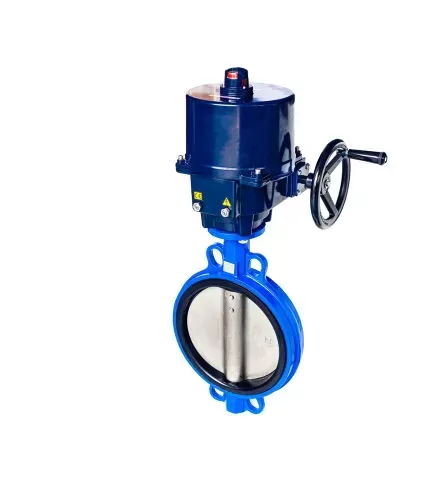Notifications

5 minutes, 15 seconds
-43 Views 0 Comments 0 Likes 0 Reviews

Butterfly valves are essential components in regulating flow across a wide range of industries—from water treatment and chemical processing to power generation and HVAC systems. However, their efficiency depends heavily on the actuator used to operate them.
The actuator—whether manual, electric, pneumatic, or hydraulic—is responsible for opening, closing, or modulating the China Control Valve disc. Choosing the right type is critical for system performance, safety, and longevity.
This guide explores the main types of butterfly valve actuators, key selection criteria, and their ideal applications—helping engineers and maintenance professionals make informed choices.
Actuators power the movement of the valve disc, controlling flow through the pipeline. They range from simple manual levers to sophisticated electric or pneumatic systems that integrate with automated control systems.
Frequency of Operation
Occasional use may justify a manual actuator. For frequent or automated operations, electric, pneumatic, or hydraulic options are more suitable.
Valve Size & Torque Requirements
Larger valves require higher torque, often exceeding manual capabilities. Pneumatic and hydraulic actuators are preferred for high-torque applications.
System Pressure & Media Type
Hydraulic actuators offer superior control in high-pressure or abrasive media environments. Pneumatic types perform well with clean, dry air.
Response Time
Pneumatic actuators provide rapid response, making them ideal for emergency shut-offs. Electric actuators offer slower but more precise movement.
Power Source Availability
Manual actuators need no power, ideal for remote sites. Electric and pneumatic actuators require electricity or compressed air, respectively.
Environmental Conditions
Electric actuators may not be suitable for explosive or wet environments. Pneumatic and hydraulic actuators perform well in harsh conditions.
Cost Considerations
Manual actuators are cost-effective. While automated types require higher upfront investment, they reduce labor and improve control over time.
Operation: Hand lever, wheel, or gearbox
Features:
No external power required
Simple and cost-effective
Ideal for small, infrequently operated valves
Applications:
Water supply systems
HVAC
Agricultural irrigation
Emergency shut-offs
Pros:
Low cost, easy installation
Fail-safe by default
Cons:
Requires manual operation
Not suitable for automation or high-torque systems
Operation: Motor-driven, AC or DC powered
Features:
Integrated torque limiters and position feedback
Suited for remote control and automation
Applications:
Water treatment
Food & beverage
Pharmaceuticals
Building automation
Pros:
Accurate, programmable
Quiet operation
Ideal for modulating flow
Cons:
Slower response
Higher cost
Limited use in wet or explosive areas
Operation: Uses compressed air to rotate the valve
Features:
Fast-acting, compact
Available in spring-return or double-acting types
Applications:
Chemical processing
Oil & gas
Power plants
Fire safety systems
Pros:
Rapid action
Reliable in harsh environments
Easy to automate
Cons:
Requires clean air
Potential for air leaks
Can be noisy
Operation: Pressurized fluid drives piston movement
Features:
High torque capacity
Suited for heavy-duty, high-pressure systems
Applications:
Offshore platforms
Mining
Industrial water control
Steel and paper plants
Pros:
Handles extreme pressure/conditions
Smooth, powerful operation
Cons:
Expensive and complex
Requires fluid maintenance
Risk of leaks if not properly maintained
| Actuator Type | Power Source | Best For | Response Time | Automation | Cost | Harsh Environments |
|---|---|---|---|---|---|---|
| Manual | None | Infrequent, small valves | Slow | No | Low | Fair |
| Electric | Electricity | Precision, indoor use | Moderate | Yes | Medium | Poor |
| Pneumatic | Compressed Air | Fast automation | Fast | Yes | Med-High | Excellent |
| Hydraulic | Hydraulic Fluid | High-torque, large valves | Fast | Yes | High | Excellent |
Selecting the appropriate actuator for a butterfly valve is essential to match your system’s torque, pressure, frequency of use, environmental conditions, and budget.
Manual actuators are simple and economical for basic use.
Electric actuators offer accuracy for automated control.
Pneumatic actuators provide a great balance of speed, cost, and reliability.
Hydraulic actuators are built for high-force, heavy-duty demands.
With the right choice, you’ll ensure efficient, safe, and long-lasting valve performance.Know more about Google SEO Directory

